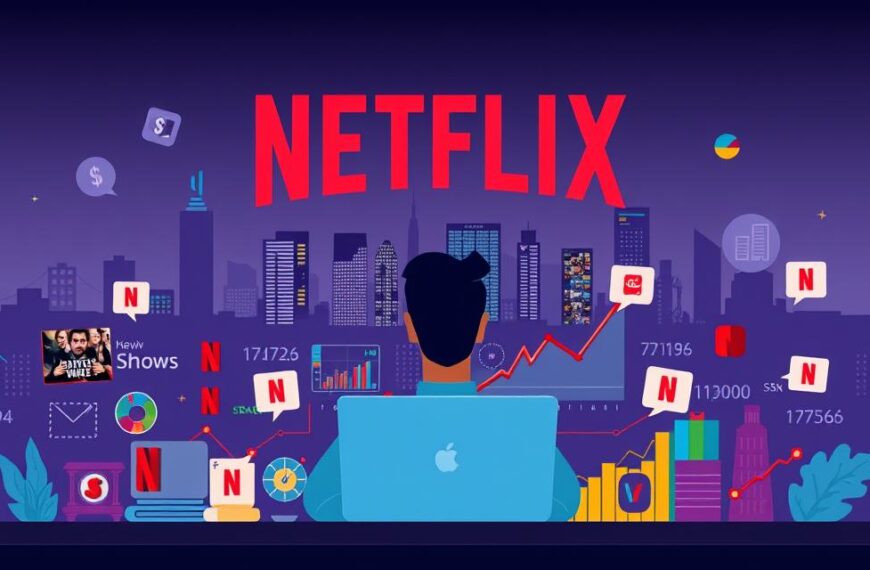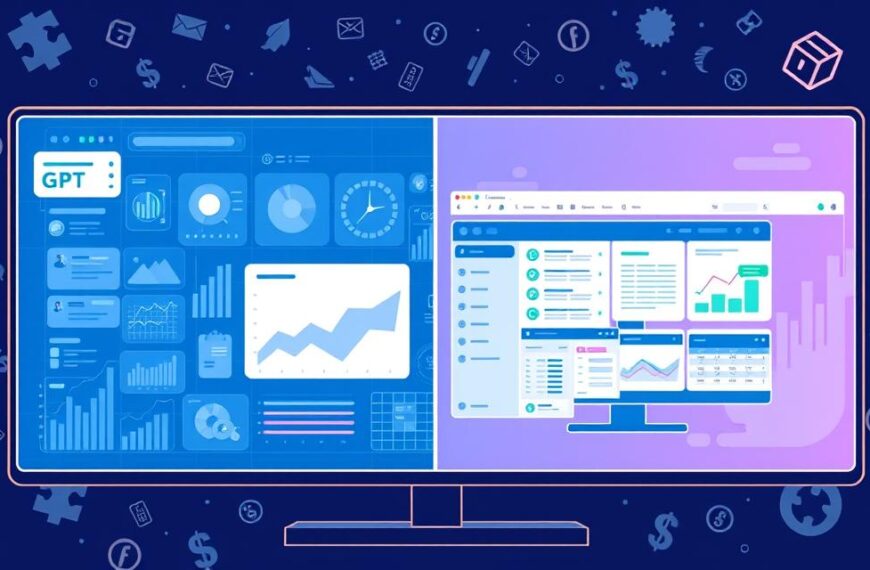In today’s fast-changing financial world, knowing how to invest for regular income is key to building wealth. We’ll look at five smart investment ways that help people earn money every month. These methods suit various risk levels and financial aims.
Are you into stocks, looking for high-yield savings, or keen on making passive income from real estate? This guide has you covered. It gives you the tools to do well, even when the economy is uncertain.
Introduction to Monthly Income Investments
Monthly income investments aim to create steady cash flow. This financial strategy is key for those wanting extra money regularly. With a variety of income-generating assets available, investors have many choices.
It’s crucial to spread out investments. As investors look into monthly income options, they find different paths like savings accounts, CDs, bonds, and REITs. Every investment option offers distinct benefits fitting various financial goals.
Knowing how to assess risks is important. By understanding market trends and personal financial needs, investors can uncover many possibilities. This approach helps achieve stable and long-term growth.
History shows dividends play a big part in investment returns. For example, between 1926 and 2023, dividends made up about 32% of the S&P 500’s total returns. This highlights how proper investment strategies can generate income.
High-Yield Savings Accounts
High-yield savings accounts offer higher interest rates than regular banks. They help grow your money faster, especially for needs like emergency funds. Knowing which account to pick can greatly affect your finances.
Benefits of High-Yield Savings Accounts
High-yield savings accounts have competitive Annual Percentage Yields (APY) up to 5.00%. This feature appeals to those looking to increase their savings. They allow easy access to your money, making them perfect for emergencies or specific plans. With little to no fees, these accounts help save more over time.
- Higher interest rates compared to the national average of 0.43%.
- Low-risk cash management, keeping your money safe while it grows.
- No need for a big balance in many cases.
- Easy online access through trustworthy banks like EverBank and BrioDirect.
How to Choose the Right Account
Choosing the right account involves looking at interest rates, as they differ among banks, from 2.50% to 5.00%. Consideration of minimum balances is also important. Some banks start with just $0.01, while others may ask for up to $2,500. Look into features like cash management for extra perks, including easy money transfers and budget tools.
| Bank | APY | Minimum Deposit |
|---|---|---|
| BrioDirect | 4.85% | $5,000 |
| EverBank | 4.75% | $0 |
| LendingClub Bank | Varies based on deposits | $250 monthly |
Certificates of Deposit (CDs)
Certificates of Deposit are a secure way to invest with fixed interest rates. They are liked by conservative investors. Knowing about market trends helps when you’re thinking about CDs because the timing of your investment can change your returns.
Understanding Market Trends with CDs
Market trends are key in deciding if CDs are a good choice. Interest rates change based on what the Federal Reserve does. This affects what CDs will give you back. When interest rates go down, CDs can be a good pick because they lock in a higher rate for their term. But when rates go up, investors might like shorter-term CDs or ones that let you take out your money without losing too much.
When to Invest in a CD
Knowing when to invest in a CD needs a lot of thought. You have to look at your own needs for cash, as well as the current market. CDs fit best for those who have a savings goal and know when they’ll need their money. CDs can offer better returns than regular savings if you can leave your money for a set time. Some CDs, like no-penalty ones, let you take out your money early without a fee. Think about these things:
- Do you need to get to your money quickly?
- What are the current interest rates?
- Your goals and when you need your investment back
- What you’d lose if you took your money out early
| Type of CD | Minimum Investment | Interest Rate | Penalty for Early Withdrawal |
|---|---|---|---|
| Traditional CD | Varies (often $1,000) | 4.40% APY (1-year) | 1-3 months of interest |
| No-Penalty CD | No minimum | 3.10% APY (3-year) | No penalty |
| Jumbo CD | $100,000 | Higher than traditional | 3 months of interest |
| Bump-Up CD | $1,000 | Variable | 1 month of interest |
Investors should think about their own financial situation when choosing CDs. This way, they can get the most out of their investment.
Bonds: A Reliable Investment Option
Bonds offer a stable investment path for those looking for fixed returns. Knowing the different types of bonds helps investors choose wisely to meet their financial aims. Each bond type has unique traits, suited to various levels of risk and investment plans.
Types of Bonds to Consider
Investors have many options when it comes to bonds:
- Coupon-Paying Bonds: They regularly provide income, making them a favourite among older investors.
- Zero-Coupon Bonds: These are purchased at a discount and pay no interest until they mature, great for saving over time.
- Corporate Bonds: These offer higher yields but with a higher risk of the issuer not paying back.
- Treasury Bonds: They are seen as safe since the U.S. government backs them, posing lower risk.
- Municipal Bonds: Ideal for funding public projects and possibly bringing tax benefits.
Assessing Risks and Returns of Bonds
Knowing the risks is key when investing in bonds. Bonds typically offer a reliable income from set interest payments, but they come with risks. Interest rate changes can affect their value. Higher interest rates often lower bond prices, causing potential losses for the investor.
Corporate bonds might yield more but also carry the risk of non-payment. Checking an issuer’s creditworthiness is crucial.
| Type of Bond | Interest Payment | Risk Level | Ideal For |
|---|---|---|---|
| Coupon-Paying Bonds | Regular payments | Low | Income-seeking investors |
| Zero-Coupon Bonds | No payments until maturity | Medium | Long-term savers |
| Corporate Bonds | Regular payments | High | Yield-focused investors |
| Treasury Bonds | Regular payments | Very low | Risk-averse investors |
| Municipal Bonds | Regular payments | Medium | Tax-sensitive investors |
By mixing different types of bonds, investors can create a strong portfolio. This strategy increases potential returns while reducing risks in fixed income investments.
Investment Funds for Steady Growth
Investment funds are great for those wanting steady growth in their savings. They include mutual funds and exchange-traded funds (ETFs), offering a mix of assets. This mix lowers the risk and can lead to steady returns over time.
Investment funds are brilliant for long-term savers, like those saving for retirement. They often contain stocks that pay dividends, providing regular income. With the current interest rates, earnings from quality bonds can be over 5%.
Creating a diverse mutual fund portfolio is smart. It’s important to look at fund expenses and decide between active or passive management. Passive funds often have lower fees, making them very popular.
It’s essential to rebalance portfolios yearly to stay on track with your goals. This avoids the mistake of following past success blindly. Focusing on regular income helps, as asset values might change. The right investment funds can help you grow your money securely.
How to Invest and Make Money Monthly
Investing wisely means planning to increase monthly earnings while meeting financial needs. Young investors do well by starting early, spreading their investments, and using technology to stay on top. This makes managing money easier and more effective.
Strategies for Maximising Monthly Returns
To get better monthly returns, certain strategies work well:
- Diversification: Putting your money in different types of investments, like stocks, bonds, and mutual funds reduces risk and might increase returns.
- Automated Savings Plans: Even small, regular savings can grow over time. For example, saving $100 every month for 30 years at a 7% return could give you close to $98,000.
- Regular Portfolio Reviews: Watching how investments perform helps make timely changes. This keeps investments aligned with one’s goals and the market.
Key Considerations Before Investing
There are key points to think of before starting to invest:
- Risk Tolerance: Knowing how much risk you can take on is essential for choosing investments.
- Time Horizon: The investment duration greatly affects the choice of investment. Longer times allow for taking on more risk.
- Emergency Fund: It’s smart to have savings for 3 to 6 months of expenses before investing elsewhere.
- Debt Management: Paying off high-interest debts, like credit cards, is crucial. It’s often more beneficial than many investments. Experts suggest saving 15-20% of your income, including for retirement.
These points lead to a sound strategy for financial growth and stability. Starting early is key, as explained in financial planning tips for young adults. This approach promises significant benefits in the long run.
Exploring Passive Income Opportunities
Passive income has become very popular for gaining financial freedom. It comes from sources that don’t need much work after they are set up. This means you can have extra money coming in alongside your main job. Looking for passive income involves checking out different options like renting out properties, investing in stocks that pay dividends, and selling digital products.
Identifying Potential Streams of Income
Here are some great passive income ideas:
- Real Estate Investment Trusts (REITs) – You can make money from real estate by investing in REITs, without the hassle of managing the properties yourself.
- Solar Farm Leasing – If you own land, leasing it for solar farms can earn you £500 to £2,000 per acre each year.
- Online Courses and E-books – Selling your knowledge through courses and books can bring in cash with little costs.
- Dividend-Paying Stocks – Owning these stocks gives you a piece of a company’s earnings regularly, making for a dependable money flow.
Most of these passive income ways can increase your finances while offering you time flexibility. For example, sharing high-demand property can bring good monthly profits. Likewise, putting your money in investment funds can make it grow over time.
Measuring the Risks of Passive Income
Before you start with passive income, it’s important to think about the risks. Many options need you to invest money or time at the beginning. When checking out risks, think about:
- Market Research – Knowing the current market helps you make smart choices.
- Investment Horizon – Figure out how long you’re ready to invest for seeing gains.
- Diversification – Putting your money in various places can reduce the risk of losing it.
- Initial Commitment – Decide if the opportunity needs a lot of ongoing work or if it will keep being passive.
By looking closely at where you can earn passive income and considering the risks, you can work towards more financial freedom.
Conclusion
Learning to invest for monthly earnings is key to financial growth and stability. By looking into options like high-yield savings, bonds, and real estate, you can start on the right foot. Each choice has its own risks and rewards.
Investors can keep up with market shifts by being diligent and constantly learning. This approach helps them grab new opportunities.
If you’re looking for passive income, think about dividend stocks or bonds. They can offer good monthly returns. Remember, high returns often mean higher risk. Spreading your investments across different assets can lower the risk of loss.
Trying out trusted funds or peer-to-peer lending can also boost your monthly income. These options offer flexibility too.
Reaching financial growth means planning well and making smart choices. By optimizing your investment mix, you can earn more each month. This helps your investments meet your long-term goals. For more insights, see resources on investment strategies and market trends.
FAQ
What are the best investment strategies for making money monthly?
For monthly earnings, consider high-yield savings, CDs, bonds, and investment funds. They vary in risk and potential returns. These methods match your financial goals with the right approach.
How can monthly income investments help with financial growth?
Monthly income investments provide consistent cash flow. This is great for supplementing your income, especially in uncertain times. It aids in financial planning and helps boost savings.
What factors should I consider when choosing a high-yield savings account?
Choosing a high-yield savings account? Look at interest rates, fees, and minimums. Check fund accessibility and if debit cards or chequing options exist. Compare offers from online banks for the best returns.
When is it beneficial to invest in a Certificate of Deposit (CD)?
CDs are best when seeking secure saving with fixed rates. They’re ideal if you won’t need the funds soon. They work well when you predict a fall in interest rates, locking in higher returns.
What types of bonds are there, and how do they differ?
Bonds come as government or corporate types. Government bonds are safer but offer lower returns. Corporate bonds yield more but are riskier. Knowing the difference helps you choose wisely.
What are investment funds, and why should I consider them?
Investment funds pool money to buy a variety of assets. This diversification lowers risk and promotes steady growth. They’re great for long-term goals like retirement savings.
How can I maximise my monthly returns from investments?
To boost monthly returns, diversify your portfolio. Use automated savings plans and adjust as markets change. Knowing your risk tolerance and investment period improves decision-making.
What are some passive income opportunities I can explore?
Explore passive income through rentals, dividend stocks, peer lending, or digital products. These require little ongoing work and contribute to financial freedom.
Are there any risks associated with passive income streams?
Yes, passive incomes carry risks like market changes and property management issues. Do your homework and assess risks before starting.


















